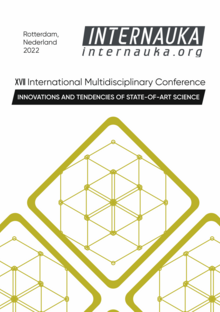IMPROVING THE QUALITY OF THE DECISIONS MADE BY NEURAL NETWORKS DUE TO THE TRANSITION TO THE USE OF MORE COMPLEX NEURONS WITH MORE COMPLEX QUANTIZERS

IMPROVING THE QUALITY OF THE DECISIONS MADE BY NEURAL NETWORKS DUE TO THE TRANSITION TO THE USE OF MORE COMPLEX NEURONS WITH MORE COMPLEX QUANTIZERS
Julia Serikova
ORCID: 0000-0002-4959-321Х, engineer-programmer of 1st category, Joint-stock company «Scientific production enterprise «Rubin»,
Russia, Penza
Andrey Sladkov
Engineer-programmer of 2nd category, Joint-stock company «Scientific production enterprise «Rubin»,
Russia, Penza
Alexander Tuzhilin
Engineer-programmer of 2nd category, Joint-stock company «Scientific production enterprise «Rubin»,
Russia, Penza
The neural network converter "biometrics-code" [1] folds the fuzzy data "Own" into the point of the code "Own", and the fuzzy data of the images "Alien" randomly hashes. In this case, the entropy of the "Own" codes becomes close to zero, and the entropy of the "Alien" codes turns out to be excessively high. The key values of information are hidden in the parameters and connections of the trained neural network when placing the code and the biometric image. However, one cannot be completely sure about the reliability of information protection by such a method. As one of the ways to improve neural network biometrics-code converters, a transition to the use of more complex neurons with more complex quantizers is proposed [2], [3]. An important difference lies in the separate adjustment of the linear and non-linear regions of neurons. Which, in turn, complicates the tuning of neuron quantizers with a large number of states.
Two-level quantization of simple neurons generates a high-entropy output with two high-entropy and inversion punctures for "Own" patterns (figure 1).

Figure 1. Hypersphere of high entropy values, having two punctures with almost zero entropy value of the "z" code and its inversion
At the same time, it is observed that upon transition to multilevel quantization with a monotonic quantization function, the puncture of the high-entropy hypersphere is shifted to a certain random state (figure 2).

Figure 2. The effect of the indefinite Hamming distance between the code responses "Own" (z) and its inversion (d)
If we use quantization functions with a set of states obtained by a table with random values, then the drawdown of the inversion "Own" in the hypersphere of multidimensional entropy is smeared over its surface. Only one puncture is guaranteed in the hypersphere of high entropy values (figure 3).

Figure 3. The use of nonmonotonic nonlinear excitation functions in artificial neurons
Obviously, the probabilistic ratio of the multidimensional volumes "Own" and "All Aliens" should grow monotonously as the number of inputs from neurons increases. Let's conduct a numerical experiment - modeling for quadratic neurons with 2-8 inputs using the handwritten image "Penza" as an example. The calculated results of the admissible value of the quantizer intervals for quadratic neurons with different numbers of inputs are presented in Table 1.
Table 1.
Estimation of the number of acceptable values of quantizer intervals for quadratic neurons with different numbers of inputs for the handwritten image "Penza"
|
Number of inputs of quadratic neuron |
Probability P ("Own") |
Number of quanta |
Rounded number of quanta |
|
2 |
0.45 |
2.222 |
2 |
|
3 |
0.37 |
2.70 |
3 |
|
4 |
0.31 |
3.23 |
3 |
|
5 |
0.228 |
4.38 |
4 |
|
6 |
0.162 |
6.17 |
6 |
|
7 |
0.96 |
10.4 |
10 |
|
8 |
0.78 |
12.8 |
13 |
Table 1 show that the number of output states for the quantizer quadratic ally increases if the distances between the thresholds are set linearly.
Thus, when implementing the proposed scheme using a multilevel quantizer and separate training of the linear and non-linear parts of neurons, the hashing properties of individual neurons are enhanced, while the probability of collisions "Own" and "Alien" is sharply reduced, and thus the goal is achieved - improving the quality of received by neural networks solutions and eliminate the threat described in [4].
As a further research, a hypothesis is put forward that an increase in the number of inputs for a quadratic neuron in the first approximation can give a proportional increase in the number of output states for the output quantizer. The verification of this hypothesis will be considered using technical means in the next scientific article.
References:
- Serikova Yu.I. Multi-criteria neural network estimation of correlation coefficients for processing small samples of biometric data/ Yu.I. Serikova, A.I. Ivanov, T.A. Zolotareva, S.A. Polkovnikova // News of higher educational institutions. Volga region. Technical sciences.–Penza: Publishing House of PGU, 2021. No.1.P.13-22.
- Volchikhin V.I. Prospects for the use of artificial neural networks with multilevel quantizers in the technology of biometric-neural network authentication / V.I. Volchikhin, A.I. Ivanov, V.A. Funtikov, E.A. Malygina // News of higher educational institutions. Volga region. Technical sciences.–Penza: Publishing House of PGU, 2013. No. 4(28) P.88-99.
- Malygina, E.A. The condition for the correct assessment of the resistance to selection attacks of biometrics-code converters with neurons implementing multilevel quantization / E.A. Malygina // In Sat. tr. scientific and technical conference of the cluster of Penza enterprises that ensure the security of information technologies. - Penza: Publishing House of PGU, T. 9, 2014. P. 12-13.
- Marshalko, G.B. Issues of assessing the stability of a neural network system for biometric authentication, access mode - http://www.ruscrypto.ru
